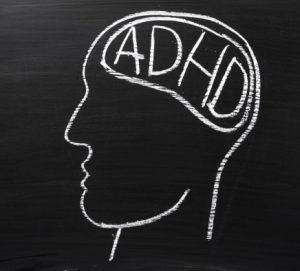It is currently estimated that about 17 million children and adults in the United States are lived with ADHD (Attention Deficit Hyperactivity Disorder), and the month of October has been designated as National ADHD Awareness Month. In order to do our part, we have compiled a list of ADHD-related articles.
ADHD confirmed as a brain disorder: Study 

Researchers have confirmed that ADHD – Attention Deficit Hyperactivity Disorder – is actually a disorder of the brain and not just the result of “poor parenting” that leads to bad behavior. Those with ADHD were found to have structural differences within their brains, meaning the variance can be seen physically.
The analysis also found that those affected by ADHD had slightly smaller brains and showed evidence of delayed development.
Lead author of the study Martine Hoogman explained, “The results from our study confirm that people with ADHD have difference in their brain structure and therefore suggest that ADHD is a disorder of the brain. We hope that this will help reduce stigma that ADHD is ‘just a label’ for difficult children or caused by poor parenting.” Continue reading…
ADHD and obesity risk higher in girls: Study
A new study has found that girls with attention-deficit hyperactivity disorder (ADHD) are at a higher risk of becoming obese than girls without the condition. The Mayo Clinic conducted the study with 1,000 girls to uncover their findings. They suggest that girls with ADHD have double the risk of becoming obese. Furthermore, the researchers did not find that ADHD treatment contributed to the risk.
Pediatrician and researcher Dr. Seema Kumar said, “There are a couple of biological mechanisms that underlie both obesity and ADHD. Girls with ADHD may not be able to control their eating and may end up overeating. Because kids with ADHD don’t have impulse control, it may also play a role in this.” Continue reading…
Polycystic ovarian syndrome (PCOS) in women is linked to ADHD and an increased risk of autism in children. A study examined the link between ADHD (attention deficit hyperactivity disorder) and PCOS.
The study included 40 women aged 18 to 35 with PCOS, who were compared to 40 healthy women with normal menstrual cycles. Current and childhood ADHD symptoms were assessed using the Adult ADHD Self-Report Scale and Wender-Utah Rating Scale.
The researchers found that the women with PCOS had higher Adult ADHD Self-Report scores and Wender-Utah Rating Scale scores. Furthermore, ADHD rates were higher in the PCOS women, compared to the control women. There were no significant differences between either group in current or childhood inattention scores. The researchers also did not find a correlation between ADHD symptoms and serum hormone levels. Continue reading…
More research seems to suggest a link between ADHD and autism that could lead to the development of useful behavioral therapy treatments.
Jean Gehricke is the well- known associate professor of pediatrics at University of California, Irvine and he’s a clinical psychologist with the Center for Autism and Neurodevelopmental Disorders. Right now a great deal of his work focuses on gaining a better understanding of why people with ADHD and autism seem to be more prone to substance abuse.
In 2014, Gerhicke and his colleagues were able to identify a genetic trait shared by people who suffer from ADHD and those with autism that explains some of the behaviors associated with both disorders. According to Gerhicke, the aggression and health risk actions are caused by a distorted dopamine signal in the brain and a gene known as, “DRD4” is critical in regulating this function. The researchers discovered that a certain form of the gene, which is associated with altered dopamine regulation is “overrepresented” in both those with ADHD and those with autism. Continue reading…
Attention deficit hyperactivity disorder (ADHD) is tied to a higher risk of eating disorders. Attention deficit hyperactivity disorder is a condition that commonly affects children and can stay with a person right into adulthood. The disorder is characterized by an inability to focus or pay attention, difficulty controlling behavior and hyperactivity.
There are three types of ADHD: predominately hyperactive-impulsive, predominately inattentive, and combined hyperactive-impulsive and inattentive. In predominately hyperactive-impulsive, six or more of the symptoms are part of the hyperactivity-impulsive category.
Predominately inattentive children have difficulty getting along with others and they may sit quietly but are not paying attention. In the latter situation parents and teachers may overlook the child and may not realize something is wrong because the child is behaving well, although they are not learning anything. Combined hyperactive-impulsive and inattentive is the most common type of ADHD where symptoms from the two other types are seen. Continue reading…